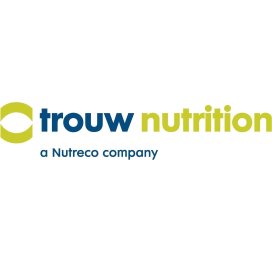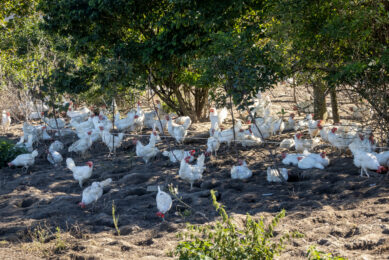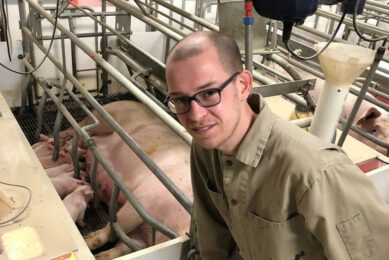Feeding piglets without costly plasma
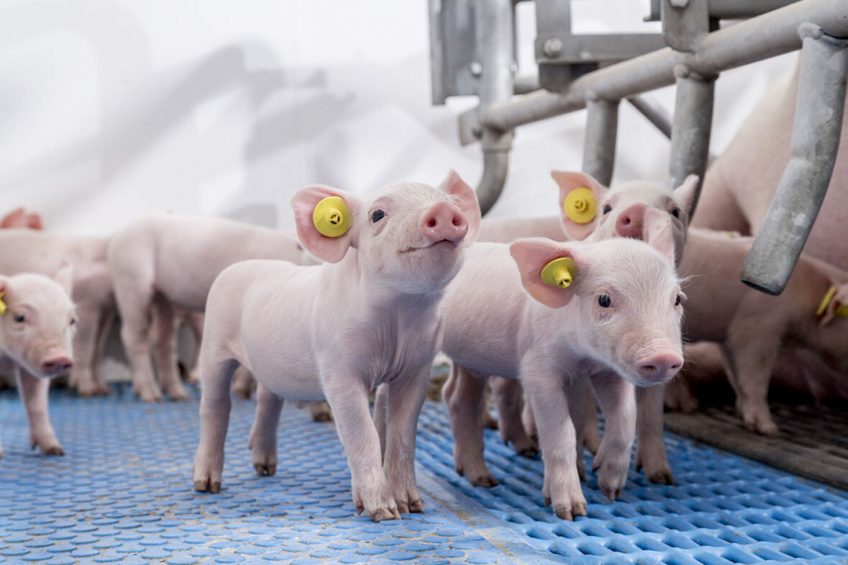
Blood plasma is a fast-digestible protein source and has consistently been used in nursery pig diets to improve performance. But it is also an expensive ingredient, putting pressure on the pig farmer’s margins. Finding a suitable alternative requires knowledge of the protein’s digestion characteristics. Kinetio Technology provides just that.
Protein is an essential part of the pig’s diet, supplying the amino acids necessary for maintenance, health and growth. Common protein sources in pig diets are fish meal, spray-dried blood plasma (hereafter referred to as blood plasma), milk-origin proteins, vegetable-based proteins (e.g., soybean meal, canola meal), soy and potato protein concentrates.
Blood plasma is used in particular in nursery pig diets because of its high digestibility and palatability. A meta-analysis of 75 studies showed that including 4-8% blood plasma in the nursery pig diet can boost feed intake levels by 41 g per day and daily weight gain by 37 g on average (Torralardonna, 2010). Blood plasma, however, can be expensive and many pig producers and nutritionists have searched for a lower-cost alternative.
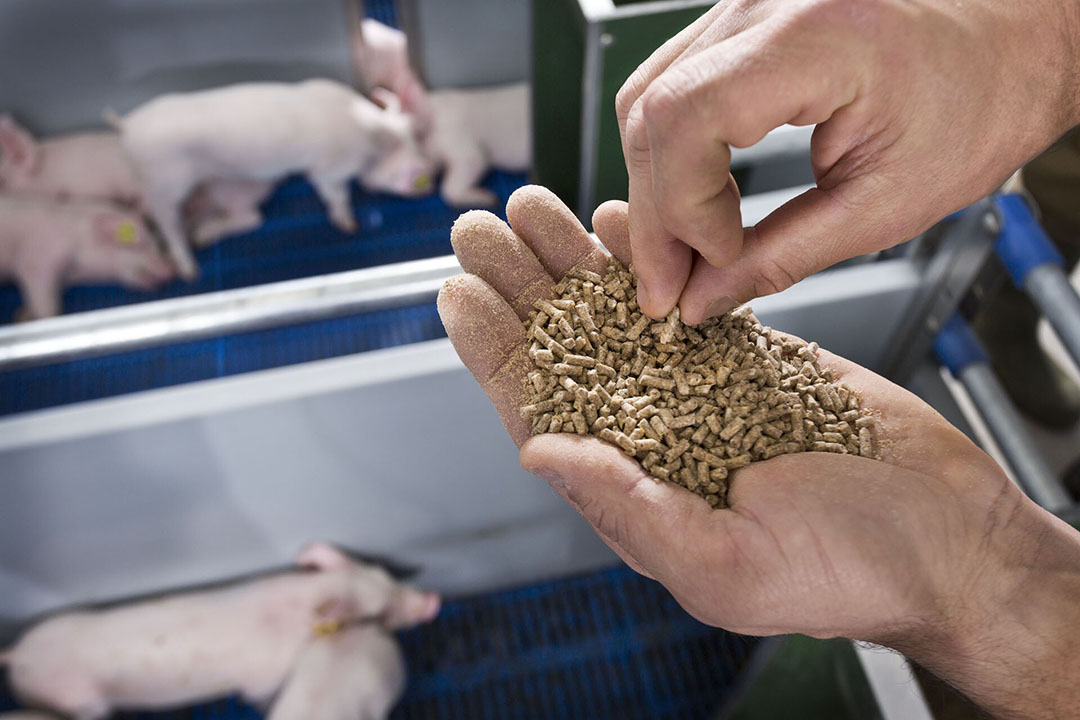
Adding a new set of nutrients
Producing an optimal nursery diet without blood plasma is possible but requires information on both the nutritional value of the protein source, and where and how quickly (or slowly) a protein is digested by the piglets (a concept called protein kinetics).
“This is essential information for nutritionists,” explains Peter Ramaekers, application and solution specialist for swine at Trouw Nutrition. “When a protein is too slow (not digested well in the stomach and small intestine), it may end up undigested in the hindgut, where it becomes food for the pathogenic bacteria that reside there (e.g., E. coli). The proliferation of these bacteria, combined with stressful conditions at weaning, increases the risk of post-weaning diarrhoea, a costly disease for pig producers.”
To be able to classify protein sources used in piglet diets based on the speed of protein digestion, Trouw Nutrition has developed an in-vitro model that mimics all the steps in the gastrointestinal tract of newly weaned pigs to examine the protein and fibre degradation kinetics. Based on this research, Trouw Nutrition has built a database on the degradation kinetics of more than 200 feed ingredients with new nutrients.
“This information distinguishes between rapidly and more slowly digested proteins, which enables us to evaluate protein sources not only by the ileal digestibility of protein and digestible amino acids, but also by the rate of digestion. We also evaluate starch and fibre in this way,” says Ramaekers, adding, “All this information is the core of Trouw Nutrition’s Kinetio Technology, which is used to formulate and optimise Milkiwean piglet diets and concentrates, for example.”
Kinetio Technology has created a new set of nutrients that a nutritionist can work with when formulating (see box below).
Different digestion rates
Each ingredient has a different rate of digestion based on the intrinsic characteristics of protein sources and the digestive capacity of animals. In addition, the digestion rate is different for each of the different pH values that we find along the 3 compartments (stomach, small intestine and large intestine) of a pig’s digestive tract. Digestion starts in the stomach, which has a lower pH than the small and large intestines. Most of the available nutrients are absorbed in the small intestine. Ideally, we don’t want protein flowing into the large intestine, because no absorption takes place here and the undigested protein will serve as food for the pathogenic bacteria.
Earlier studies by Trouw Nutrition showed that post-weaning diarrhoea is reduced when pigs are fed diets containing rapidly digestible protein sources. When using Kinetio Technology, Trouw Nutrition’s research shows that the stomach protein solubility of some protein sources is low, whereas the protein solubility of others is high. The more soluble the protein in the stomach phase, the faster the degradation rate of the protein. Blood plasma is one of the most quickly digestible proteins (Figure 1).

Wheat gluten – same performance, lower costs
Because blood plasma is a fast-digested protein source, it is often used in nursery pig diets to reduce and control scours and post-weaning diarrhoea. Zinc oxide (ZnO) is also used for the same reasons in some countries. However, as Ramaekers explains, this is not a sustainable approach.
“High (therapeutic) levels of ZnO will be banned soon in the EU as a tool to prevent health issues in piglets,” he says. “Blood plasma is, and will remain, an expensive feed ingredient that increases the feed cost per piglet. We used Kinetio knowledge to find suitable alternatives with a similar concentration of total fast-digested protein in the diet to the diet with blood plasma.”
Three diets were used:
- Diet 1: A control diet was a typical nursery piglet diet.
- Diet 2: A diet with a greater concentration of ‘fast protein’ (with most of this fast protein supplied by blood plasma).
- Diet 3: A diet that contained the same concentration of fast protein as Diet 2 (with several different sources compared with Diet 2). No blood plasma was included.
Results indicated that pigs fed Diets 2 and 3 had greater ADFI, ADG and FCR compared with pigs fed the control diet. There was no difference in performance between Diets 2 and 3, but Diet 3 (without blood plasma) was less expensive and resulted in a lower cost per kg gain and a better margin per pig (Table 1).
Conclusion
Over the years, we have gained a better understanding of crude protein (CP) and amino acid (AA) utilisation by piglets. Some of the steps we took in response included moving from working with CP to working with the standardised ileal digestibility of AA. With the knowledge of Kinetio Technology, we are adding a new level of understanding: the speed of digestion. This creates a new set of nutrients and allows us to categorise protein as slow or fast-digestible for over 200 ingredients.
This is the next evolution in precision feeding to formulate better, more cost-effective diets for optimum health and performance. The recent trial presented here showed that using Kinetio Technology can help identify and prove that wheat gluten meal can be a good alternative to blood plasma for performance and margins in piglet diets.


